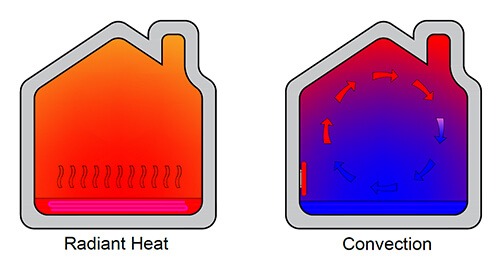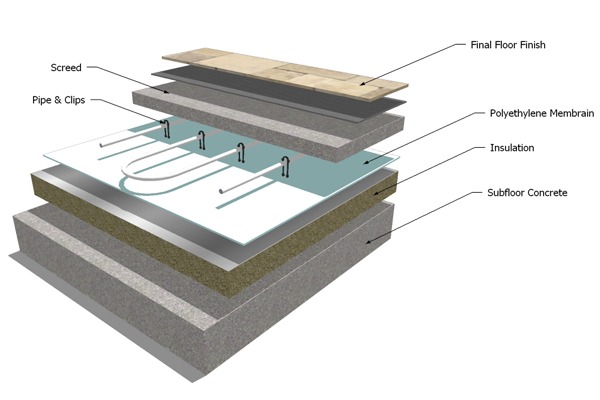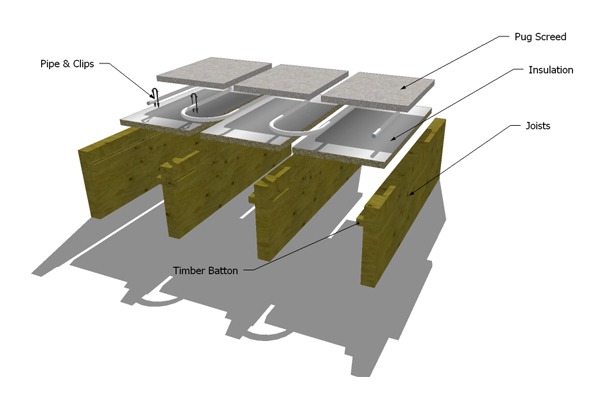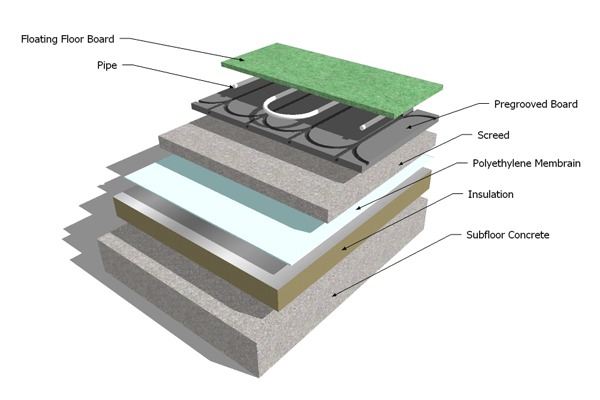Underfloor Heating
Underfloor heating provides a comfortable room temperature with no hot and cold spots, or draughts, which heating from radiators (convection heating) promotes.
Underfloor heating uses radiant heat by using the floor as one large heat emitter. The normal surface temperature of the floor is around 26°C, and because the heat is radiating from the floor it stratifies creating a comfortable room temperature.

Floor Types:
Solid Floors
With a solid floor construction the underfloor heating pipework is embedded within the screed. This can produce outputs of up to 120W/MT2. Outputs required for most new build houses can be achieved at a lower flow temperature compared to other floor types, this means it is highly energy efficient and ideal when using ground or air source heat pumps.

Suspended Timber
Suspended timber floors are commonly used on intermediate floors. There are several options for fitting underfloor heating pipework into suspended floors, these include; pug screed, aluminium spreader plates and foil blanket systems. Our design team will discuss the best option for your project.

Overboard Systems
Overboard systems are normally used where underfloor heating is required in an existing building where the floors cannot be lifted either due to construction constraints or for financial reasons.

Equipment:
Pipe
We use multi-layered (PERT/AL/PERT) pipe for ease of installation and peace of mind. The aluminium core forms a mechanical barrier to stop any oxygen diffusion. The pipe is form stable so it remains in the shape it has been bent into, this negates the need for the use of castellated boarding.

Controls
Whether you require simple time and temperature controls, Wifi enabled, or fully networked controls for your entire heating and hot water demands, we can supply the equipment based on your needs.

Manifolds
The manifolds we supply are a one-piece nickel plated brass unit with integral flow meters and balancing valves. They are provided with filling and purging points, and pressure and temperature gauges.



